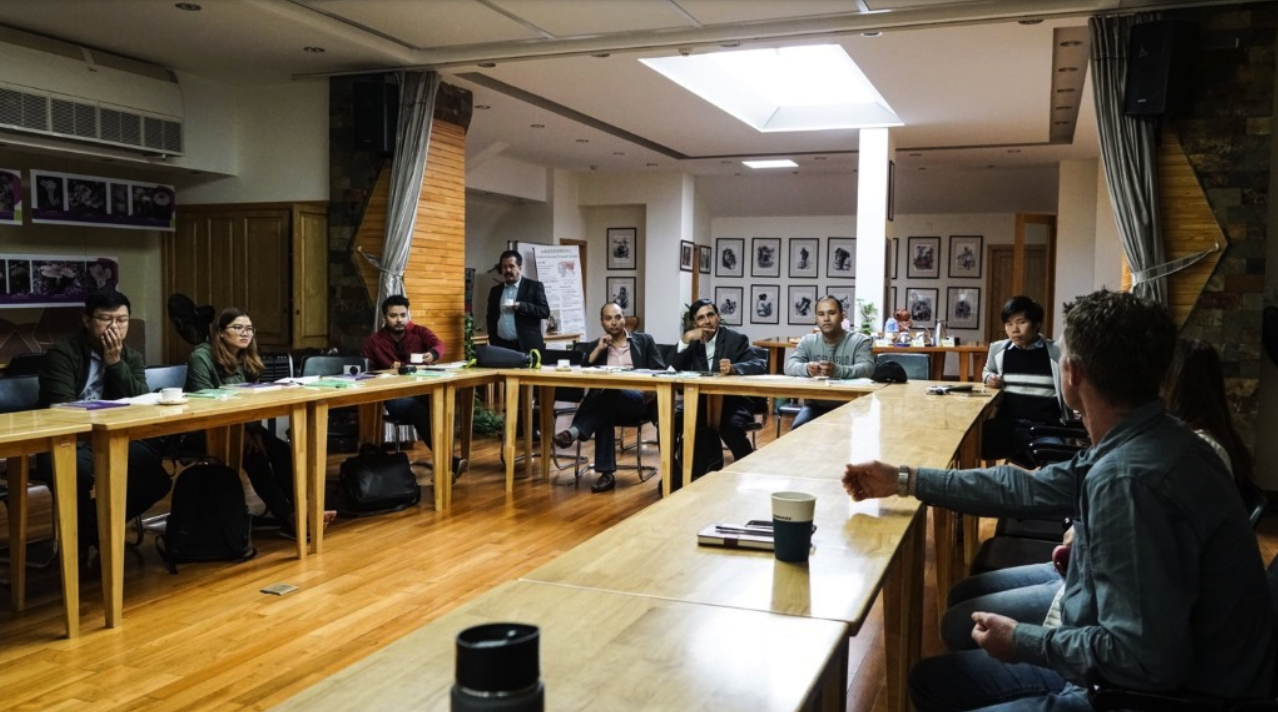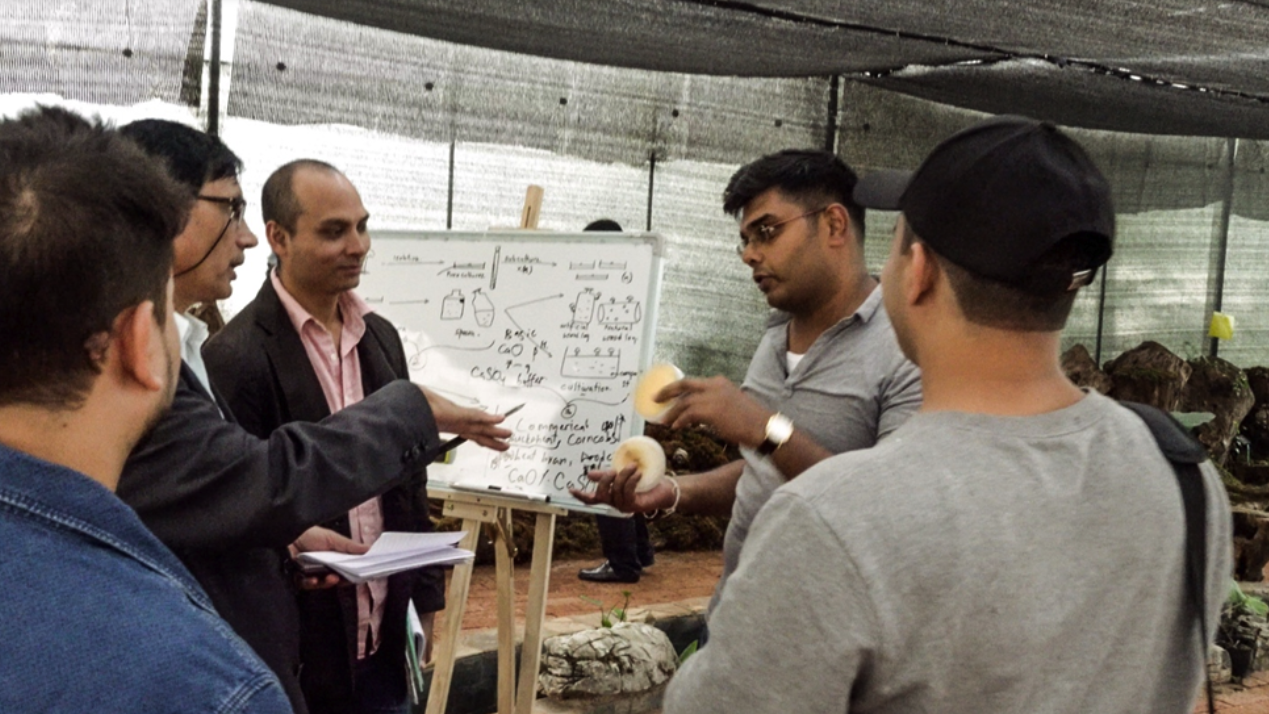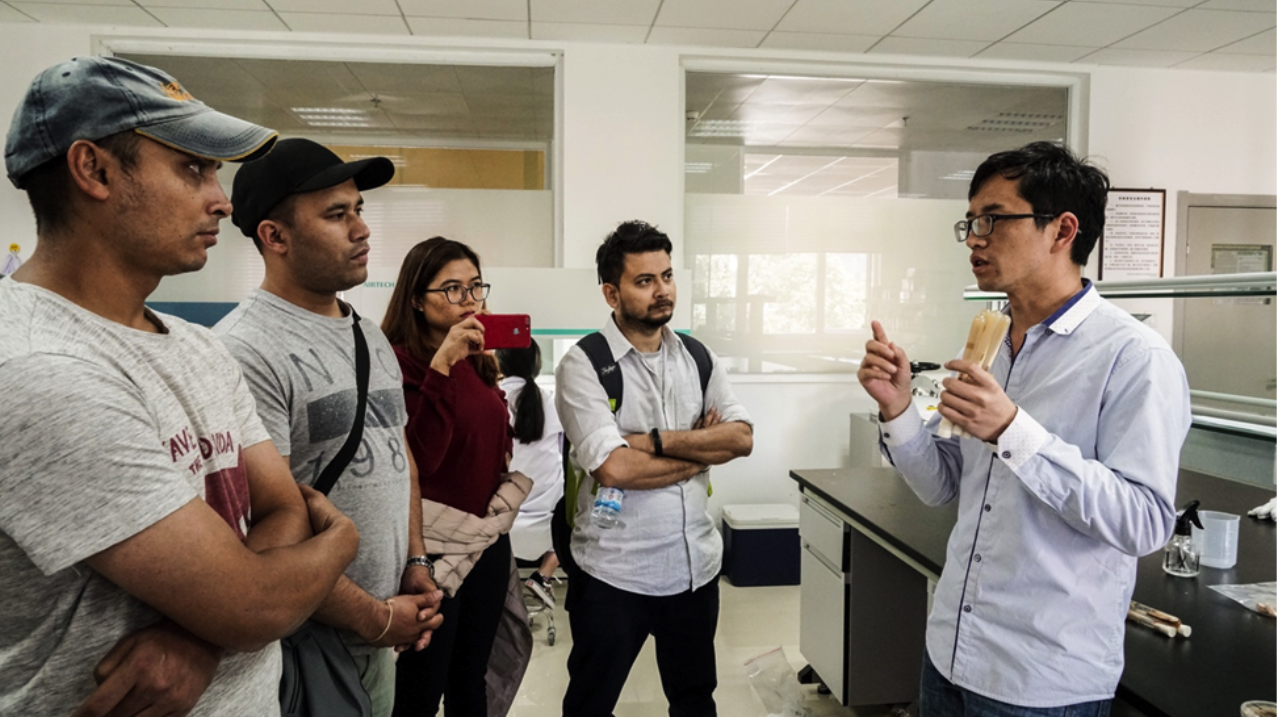Forest-Fungi Agroforestry System
Climate-smart practice for enhancing rural livelihoods
Challenges
Agroforestry, or the use of trees in agriculture, is a traditional farming practice in India, Nepal and China that provides food, nutrition and ecosystem services to support livelihoods and agricultural production. Increasing reliance on modern commercial monocropping has siphoned resources and attention from this indigenous system. Agroforestry systems require a longer waiting time before starting production compared to annual crops. Therefore, the need for farmers to make both cash and time investments during the early years of planting presents major challenges. Consequently, adding seasonal and annual harvests that become available from the first year could be a vital boost to the viability of agroforestry systems for smallholders’ livelihood security. One possible way of accomplishing this is through integrating mushroom cultivation into agroforestry.
Towards a Solution
The Centre for Mountain Futures (CMF) has developed a unique agroforestry system in which various medicinal plants and mushrooms are intercropped with multipurpose trees. This technique is truly a climate-smart practice for enhancing rural livelihoods.
Previously, trial pilots were established in a restored phosphorus mining site near Kunming and in Honghe County in Yunnan Province of southwest China. Honghe County, as a remote region in China with an average per-capita income far below China’s national average, is dominated by mountains terrain and indigenous ethnic communities. The local Honghe government has provided land to CMF for the exploration of climate-smart practices, and accordingly, CMF is implementing a large-scale plantation based on a forest-fungi agroforestry system. India is a populous and developing country, faces many of the same challenges we have seen in Honghe county. Smallholder farmers and workers in the country, especially women and children, require small-scale economic opportunities to increase access to adequate nutrition and raise living standards. Nepal and Myanmar are also underdeveloped and highly impoverished mountainous countries facing similar developmental problems. These common factors across Honghe, India, Nepal and Myanmar make them ideal sites for developing climate-smart and income-bolstering agroforestry practices.
Agriculture is a vital industry across these four countries. To some degree, all sites have suffered from widespread deforestation and lack of viable livelihood options. Tackling local poverty in a systematic way therefore requires solutions, and investments, that can be applied to a highly degraded landscape while also providing secure incomes. These investments operate through various programmes, of which agroforestry system development is one of the most highly regarded.
The introduction of similar mushroom cultivation practices along with agroforestry systems are applicable in India, Nepal, Myanmar and other developing countries, and would directly and indirectly address SDGs 1, 2, 5, 8,13 and 15. In the Istanbul Programme of Action, the project addresses Priority 1 (production capacity infrastructure, energy, science, technology and innovation, private sector development) and Priority 2 (agriculture, food security and rural development).
Mushroom consumption in China is high and increasing on a year-to-year basis. Global mushroom consumption patterns present an excellent opportunity to farmers and NGOs in developing nations to lift communities out of poverty through the sustainable and environmentally friendly cultivation of economically valuable mushroom species.
Indigenous farmer networks can help facilitate the spread of cultivation and management techniques developed by CMF researchers across Nepal, India and Myanmar village clusters. This knowledge transfer regarding the cultivation, collection, spawn production, drying and storage of valuable and edible mushrooms such as morels (Morchella) can directly and indirectly supplement income streams for farming communities within and beyond project boundaries.
Supported by the China South-South Development Center Project, representatives from India, Nepal and Myanmar, whose real needs and developmental demands were first assessed by CMF staff, were invited to CMF, Kunming Institute of Botany to participate in a five-day intensive training program regarding the cultivation and production of mushrooms deemed viable for growth in their country of origin. The training covered both solid-state cultivation (e.g., the bag cultivation method) and liquid-state cultivation, with a particular emphasis on the cultivation of Ganoderma lucidum and Morchella.
Training on how to cultivate and produce these two high-demand species was meant to build a foundation for the future cultivation of other mushroom varieties with similar cultivation methods. Visiting agrotechnicians were equipped with the technologies relating to different edible and medicinal mushroom types. These visiting delegates from Nepal, India and Myanmar underwent capacity building to utilize high-value mushroom growing technologies and were empowered to set their own guidelines for the cultivation of economic mushrooms and train smallholder farmers, especially women, in their communities.
In addition, a mushroom cultivation video recorded during the training workshop has been uploaded onto our website and is available for public access. The video serves as an important reference for participants after they return home and begin to apply their skills to the task of mushroom cultivation. Meanwhile, a handbook on economic mushroom cultivation will be finalized and published shortly, thereby jumpstarting the capacity of rural development by facilitating mushroom cultivation across the world.
More importantly, the forest-fungi agroforestry system training programme must be continued in developing countries, as it not only stimulates sustainable rural development, provides stable sources of income and supplements household nutrition for rural and impoverished communities, especially for women who are disproportionately impacted by work at the household level, but it also demonstrates the social and environmental benefits of intercropping multipurpose trees with mushrooms and other economically viable crops. Continuous support from the SSDC Project has ensured the project’s successful implementation. In the future, we will further enhance cooperation with the SSDC project and strengthen practical cooperation with our partners from developing countries, especially focusing our attention on, and providing more opportunities to, the least developed countries.
Also available in: Arabic | Chinese | French | Portuguese | Russian | Spanish
Contact Information
Prof. Peter Mortimer, Soil Biology Team Leader, Centre for Mountain Futures, Kunming Institute of Botany, Chinese Academy of Sciences (CAS)
Countries involved
China, India, Myanmar, Nepal
Implementing Entities
Centre for Mountain Futures (CMF), Kunming Institute of Botany (KIB), Chinese Academy of Sciences (CAS)
Project Status
Completed
Project Period
6/2018 - 11/2018
URL of the practice
http://english.kib.cas.cnPrimary SDG
01 - No Poverty
Secondary SDGs
02 - Zero Hunger, 05 - Gender Equality, 08 - Decent Work and Economic Growth, 13 - Climate Action, 15 - Life on Land
Primary SDG Targets
1.1 1.aSimilar Solutions













